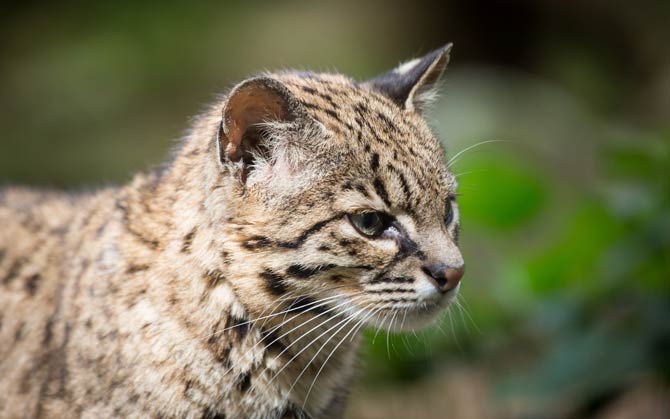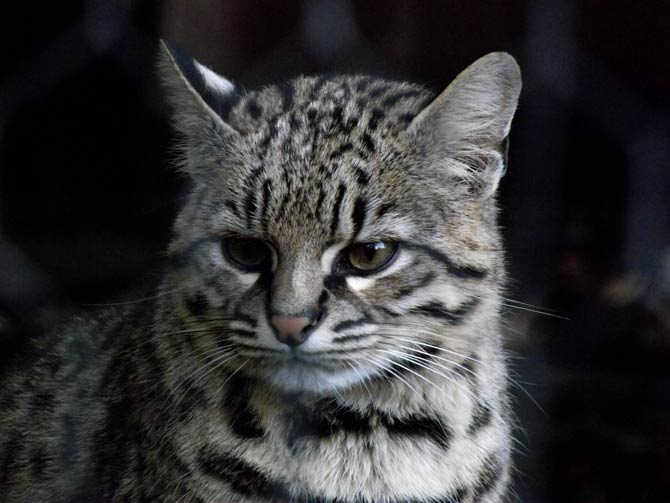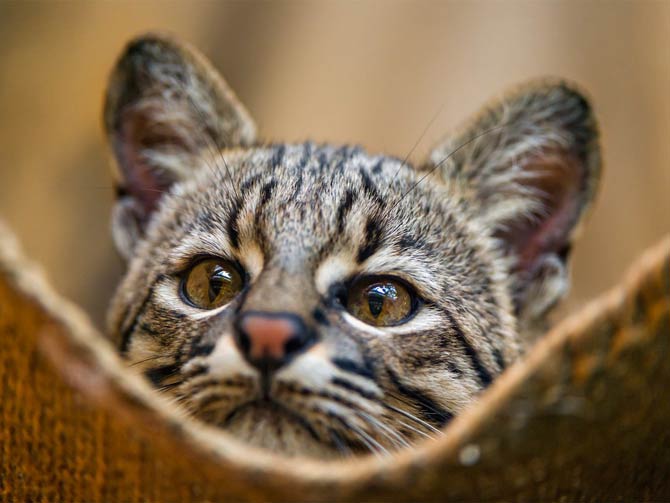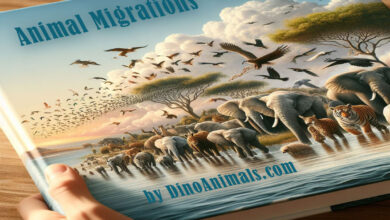Argentinian ocelot, Argentine cat – the wild cat of the American Pampas
One of the most characteristic predators of South American grass and shrub plains is Geoffroy’s cat. As a nocturnal animal, it is almost invisible, but plays an important role in the nature of these regions. Although it has almost no natural enemies, it is declining in numbers due to humans.
Geoffroy’s cat was first researched by the French scientist Étienne Geoffroy Saint-Hilaire – a famous naturalist at his time, considered one of the precursors of the theory of evolution. It was he who described five subspecies of this predator. This cat was scientifically described in 1844 and named after its discoverer and was included in the genus Felis, the one to which the domestic cat belongs. To this day, the name “Geoffroy’s cat” is recognized in almost every country and is classified as a genus Leopardus.

Classification
- Kingdom: Animalia
- Phylum: Chordata
- Class: Mammalia
- Order: Carnivora
- Suborder: Feliformia
- Family: Felidae
- Subfamily: Felinae
- Genus: Leopardus
- Species: Leopardus geoffroyi
- Subspecies:
- Leopardus geoffroyi geoffroyi: Central Argentina
- Leopardus geoffroyi euxantha: Northern Argentina, Western Bolivia
- Leopardus geoffroyi leucobapta: Patagonia
- Leopardus geoffroyi paraguae: Northern Argentina, Paraguay, Southeastern Brazil, Uruguay
- Leopardus geoffroyi salinarum: Northwestern and Central Argentina

Characteristic
Appearance
Geoffroy’s cat looks a bit like the well-known domestic cat, but it is more delicate than it. It is also distinguished by rounded ears. It measures up to 60 cm (24 in) in length, with a tail up to 31 cm (12.2 in) long. The weight of the animal is usually in the range of 2-5 kg (4.4 – 11 lb), although male cats weighing up to 7.8 kg (17.2 lb) have been found. Animals living at the southern ends of their range are noticeably larger than those in the north.
The Geoffroy’s cat fur has two color varieties. Southern cats are silver-gray with a white belly, while those of the northern populations have yellow-brown fur with a cream belly. In both varieties, there are small, dark spots on the body, which are sometimes arranged in stripes. There are always dark rings on the tail, and the ears are black with white spots. You can also see melanistic Argentinian cats, that is, all black.

Occurrence
Geoffroy’s cat lives in Argentina, Chile, Bolivia, Brazil, Paraguay and Uruguay. It lives in the Pampas and savannah from Gran Chaco in Bolivia to the Strait of Magellan. It is found at different altitudes – from sea level to 3,800 m (12,500 ft) above sea level.
It prefers areas with thickets and shrubs, abundant in hideouts, located near rivers. However, it can also be found in meadows, forests and even swamps. These cats just don’t like open spaces where they can’t hide.

Lifestyle and habits
Argentine cats are loners, they meet almost exclusively during the mating season. Their territories are huge for animals of this size – females occupy almost 2 – 6 km2 (0.77 – 2.32 mi2) of land, and males – up to 12 km2 (4.6 mi2). Males are very careful that their territories do not overlap.
Geoffroy’s cats move mainly on the ground, but they can also jump efficiently on rocks. They are excellent swimmers and willingly enter the water. They only reluctantly climb trees, and practically only to mark the territory.
These cats lead a nocturnal lifestyle. They go hunting at dusk. They often perch on their hind legs, rising up and looking around. They feed on almost anything they can hunt. They are most likely to eat small mammals (mainly hares and guinea pigs), as well as birds, reptiles and even larger insects. They also hunt for fish. In their environment, they are a very important factor limiting the number of herbivores.

Reproduction
Geoffroy’s cats mate from October to March. Cats go into heat several times, at intervals of about 12 days. Animals of both sexes meet most often on rock shelves. Often, one female cat is interested in two male cats, which then fight with each other. The duration of pregnancy varies and depends, among other things, on the weather and the availability of food; it takes 72-78 days. Birthdays are between December and May.
At the end of pregnancy, the female looks for a safe lair, most often a rock crevice or depression under a thick branch. It usually gives birth to 2-3 kittens weighing an average of 65-95 g (2.3 – 3.4 oz). After 8-12 days, they open their eyes. After 6-7 weeks, they eat solid food and can climb rocks.
After 8 weeks, the mother stops feeding the kittens, but takes care of them until they are about 8 months old. All this time, in their defense, he can fight very fiercely, and even chase away a larger attacker. Females become sexually mature at the age of 18 months, and males – 24 months. Geoffroy’s cats usually live up to 15 years in the wild, in captivity one of the cats lived to 20 years.

Geoffroy’s cat and man
This cat has always been a hunted victim because of its valuable skin. This persecution intensified the most in the 1960s and 1980s, when the trade in its skins was completely legal. In a short time, an unimaginable number of these animals was killed – as many as 350,000 only in three years. Even at the beginning of the 1980s, when the cat was officially under protection, it often fell victim to hunters who did not know about the hunting ban; moreover, initially the ban was not very effectively enforced.
The cat is still a frequent victim of local farmers who consider it a pest as it hunts chickens frequently. The illegal leather trade also continues, although to a much lesser extent than until recently.
Argentine cats are often crossed with domestic cats. Unlike their wild brethren, such hybrids are very gentle. In this way, in the 1970s, a breed of cats called Safari was bred.

Conservation
Currently, Geoffroy’s cat is in the LC category according to IUCN, and therefore as a low-risk species. The reason for this is its wide range and a relatively large number (it is the most numerous wild cat in its range).
Currently, all countries where Geoffroy’s cat is found are banned from hunting and trading. This slightly improved the situation of this animal, but poachers and the increasing transformation of its natural habitats remain a threat to it. The continuous decline in the size of this species may contribute to the imminent change of category.
The Argentine cat is now – like many other wild cats – covered by the EEP (European Breeding Program). Nearly 400 zoos take part in it.

Detailed data / dimensions (size)
Argentine ocelot, Argentine cat, Geoffroy’s cat (Leopardus geoffroyi)
- Body length: approx. 60 cm (23.6 in)
- Tail length: up to 31 cm (12.2 in)
- Weight: average 2-5 kg (4.4 – 11 lb), record up to 7-8 kg (15.4 – 17.6 lb)

Geoffroy’s cat – interesting facts
- Geoffroy’s cat can walk on the underside of branches, clinging to the bark with its claws. It can also dangle, holding onto branches with only its hind paws.
- It is a good swimmer and is one of the few cats that does not avoid water.
- The Argentine cat is extremely aggressive and never gets tame. Animals similar to him but kept in homes are hybrids with the domestic cat or representatives of the Safari breed.

Recommended
- Asian golden cat
- Bay cat
- Lion vs tiger
- Tsavo lions
- Barbary lion
- Siberian tiger
- Bengal tiger
- Sumatran tiger
- Indochinese tiger
- Malayan tiger
- Tigers
- White tigers
- Lions
- White lions
- Liger
- Animal fights
- Big cats
- Black panther
- Leopard
- Snow leopard
- African Lion
- Fastest animals
- Fastest birds


















